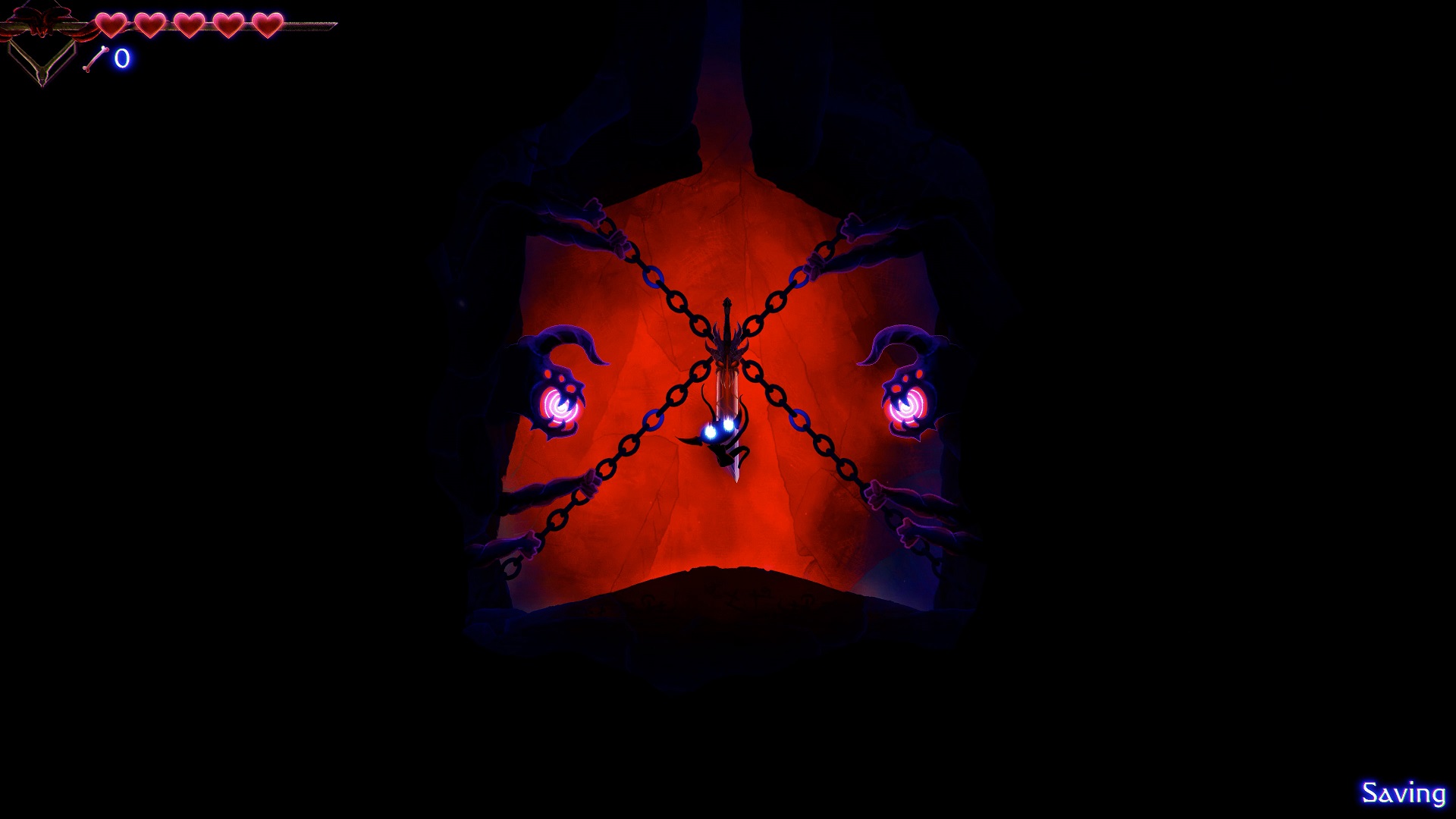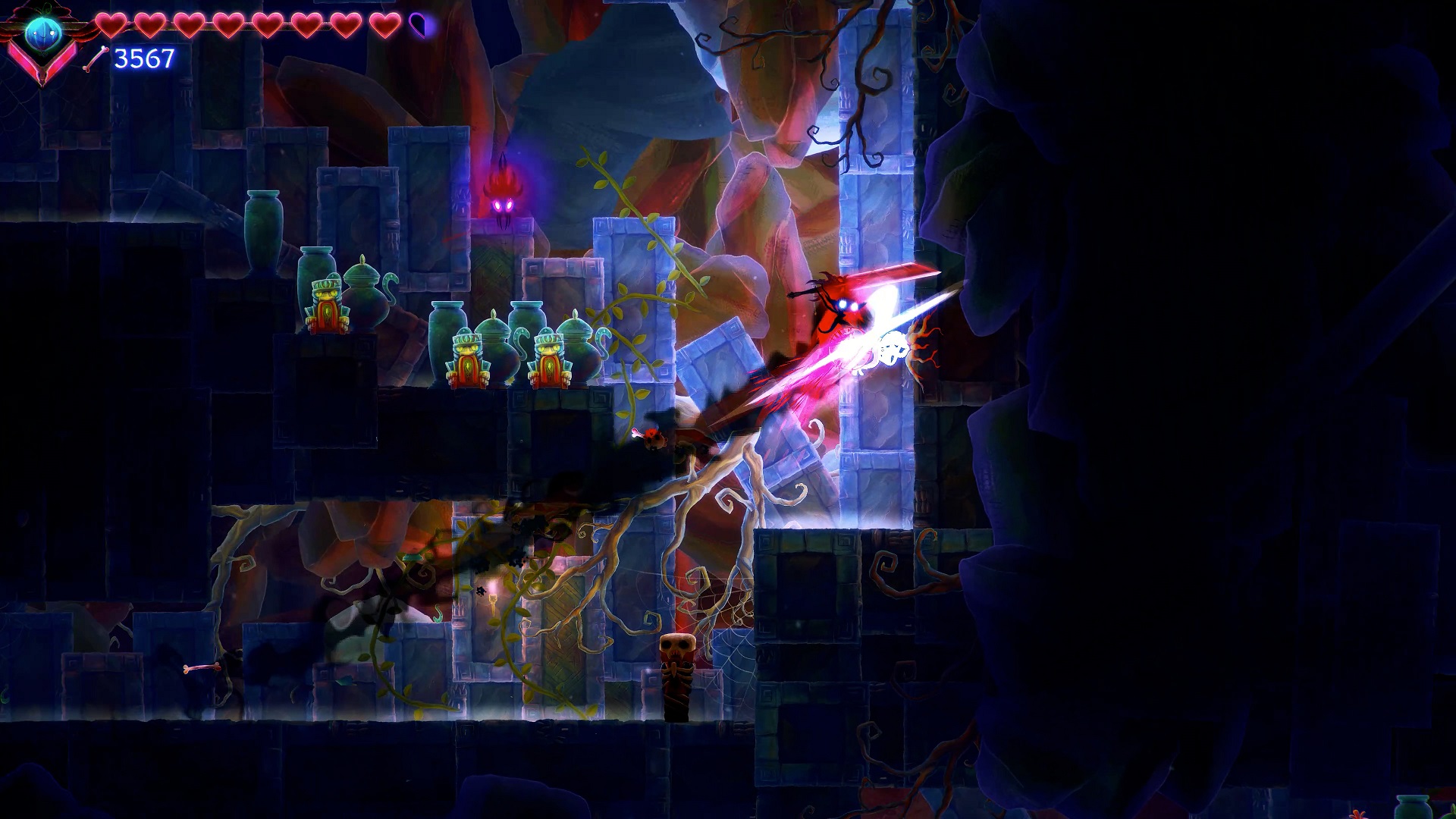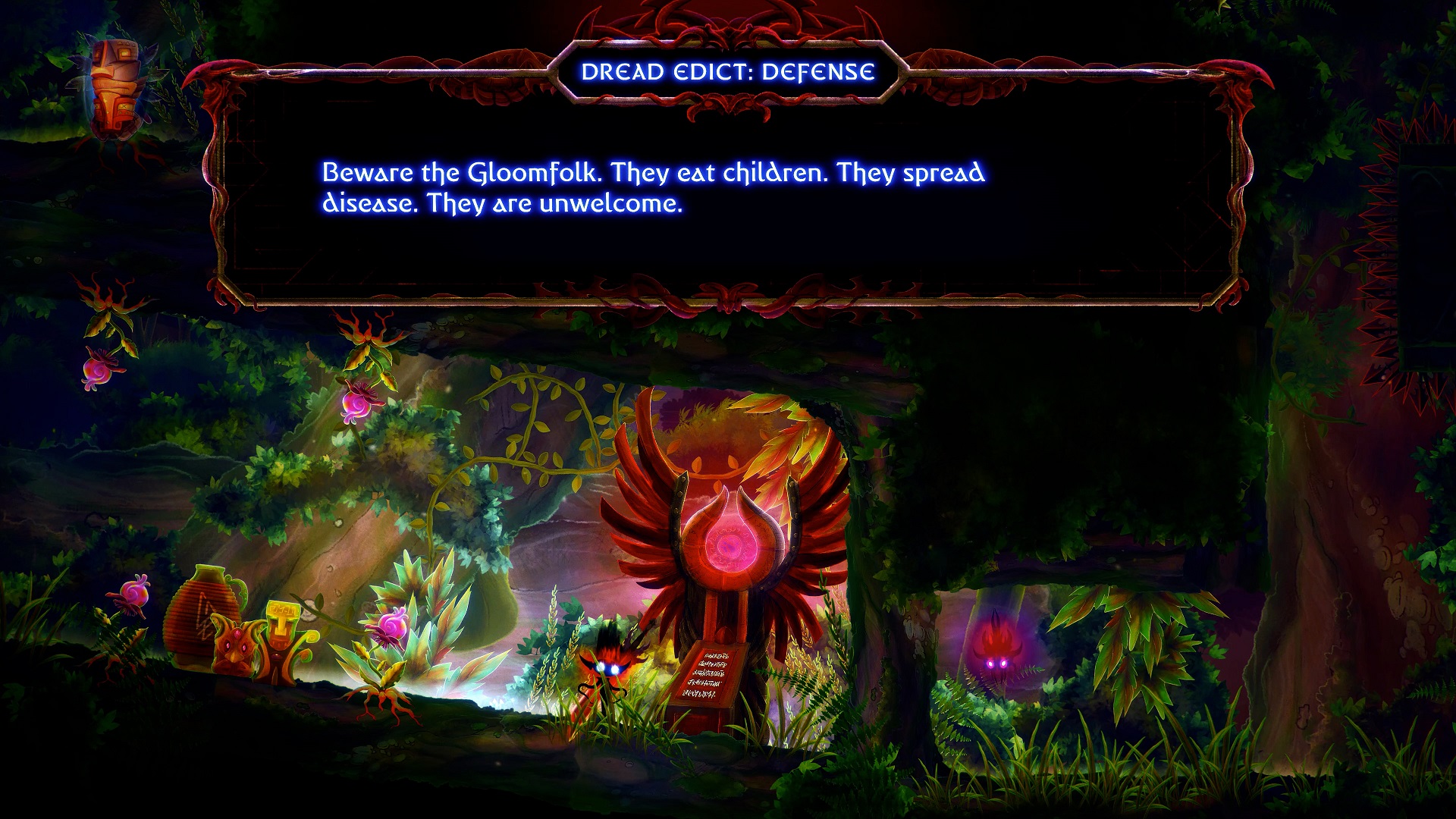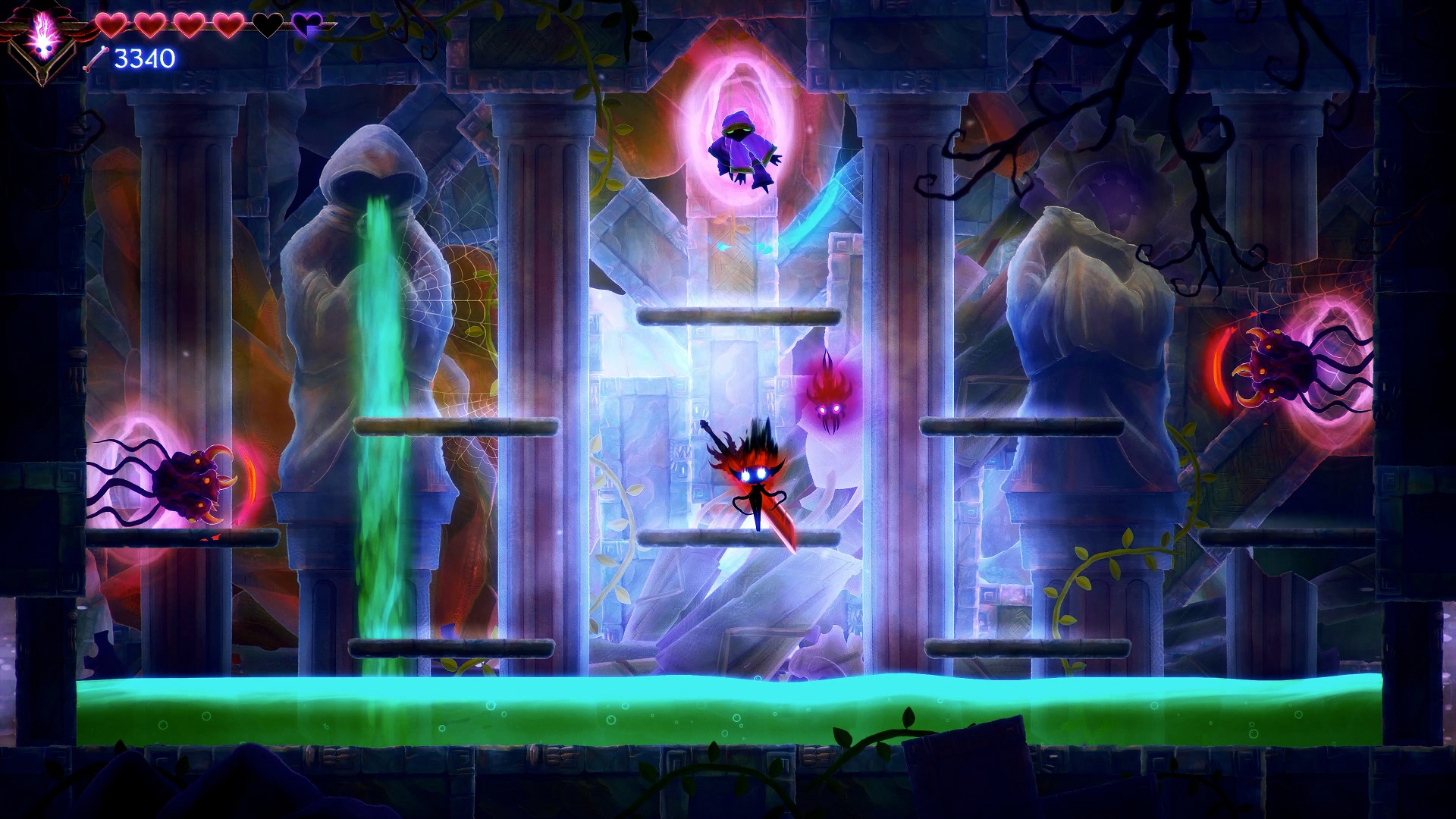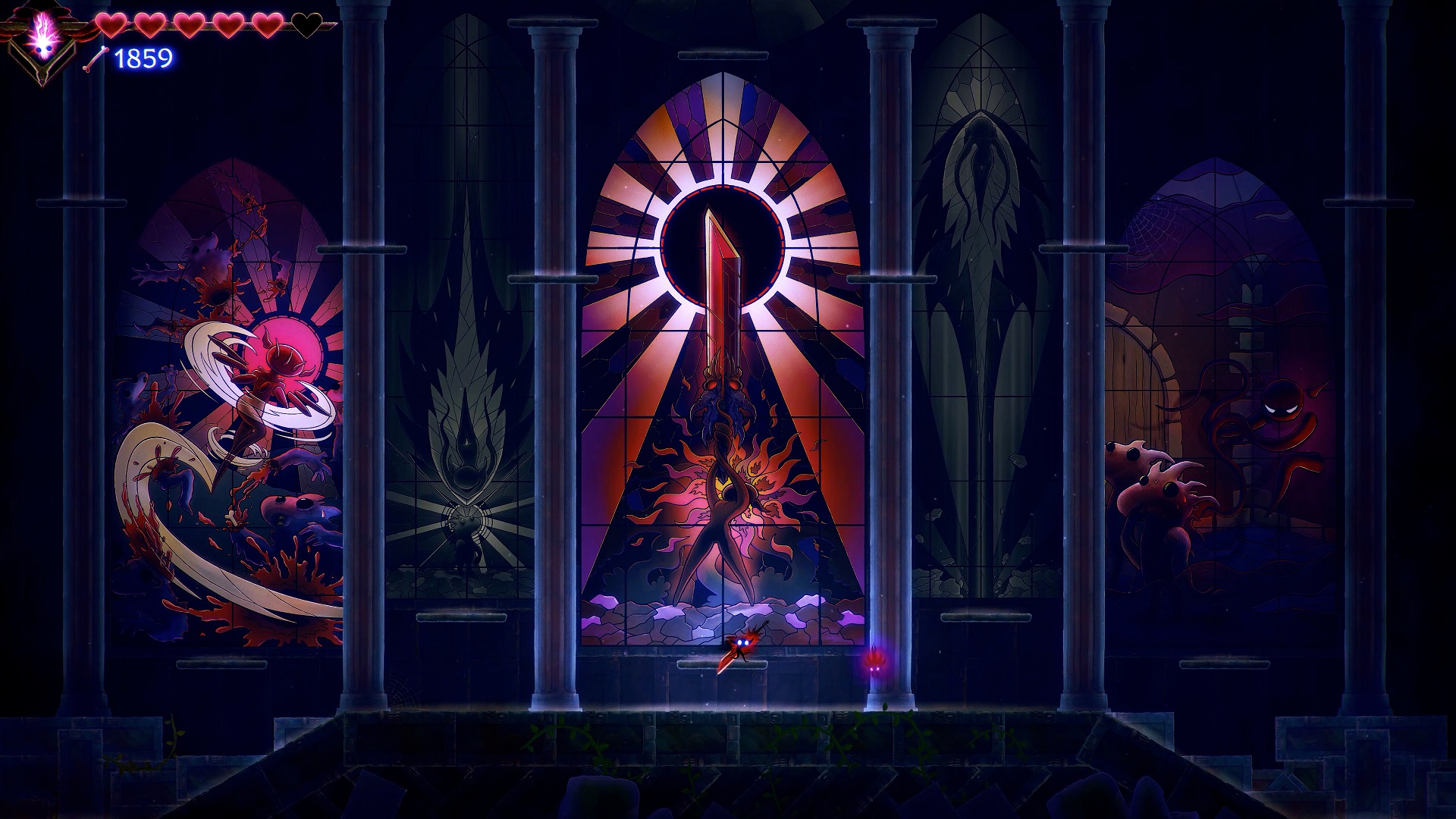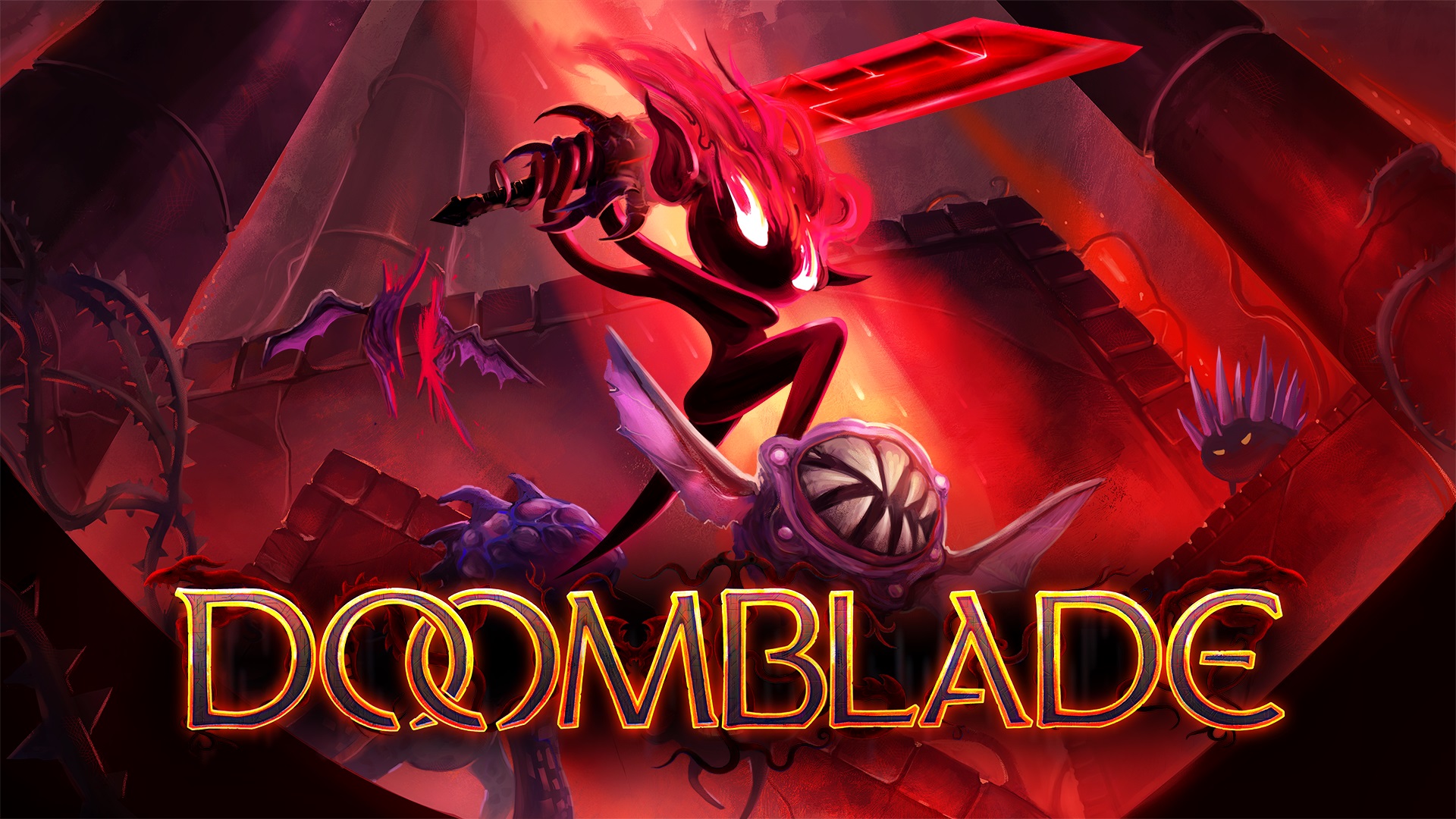
Doomblade is a 2D Metroidvania where you play as a gloomfolk who finds a sentient weapon. As we pair up with Doom, the titular weapon, we seek to unlock the powers of the void to take down the Dread Lords, who have sistematically ruined the gloomfolk’s lives in the hopes that they never find the blade.
Doomblade plays almost like a power fantasy, where we instantly get an obscenely strong weapon and get to dash through enemies without them really ever standing a chance. This is true for most of the game; the enemies are there as stepping stones, and they don’t become a threat until much later.
As a Metroidvania, Doomblade does some interesting things. Most games of the genre have the player moving from area to area, usually only backtracking to unlock secrets or move through really obvious progression spots.
Doomblade
Developer: Muro Studios
Publisher: Iceberg Interactive
Platforms: Microsoft Windows (Reviewed)
Release Date: May 31st, 2023
Players: 1
Price: $14.99
Doomblade does a similar thing, except you’ll constantly go between areas to chip away at them with your new powers. It isn’t about clearing one area and acquiring your progression tool as much as it is about slowly clearing multiple areas at the same time. It reminds me a bit of how La Mulana approached some of its progression.
This approach to clearing the map starts off fine but eventually gets overwhelming as you explore more areas, culminating in the player rubbing their face against every wall looking for the path to progress. This isn’t an issue until halfway through the game, which is when things slowly start falling apart.
Doomblade has a pretty decent first half. The game has a really kinetic and satisfying flow to the movement. Chaining dashes and zooming around the screen is the important part, and combat just happens to be a consequence of it.
I’m torn on this game because it manages to be really entertaining and fun for a good six hours, and then it decides to turn into Super Meat Boy, ditching the power fantasy of clearing a whole room just dashing through enemies in favor of random difficulty spikes, precision platforming, and kamikaze enemies.
The cracks in combat also show in boss fights, which almost always boil down to just attacking the enemy until it forces you to dash away. No matter how many upgrades the player acquires, combat is the same from beginning to end: just dashing at enemies to hurt them.
One of the upgrades is a blast of electricity, which doesn’t affect enemies but has some minor usage in puzzle-solving. The boss who makes the most use of this mechanic is the Cybersentinel, which should be a fun fight but becomes a game of blindly aiming a projectile and hoping it bounces on the wall correctly.
The fight isn’t really difficult, but trying to hit a target that constantly rotates while also having to rely on wall bounces is awful, and the worst part is that this mechanic comes back during some of the tight platforming sections, which makes for a hellish game of basketball.
The developers were confident enough in the game’s level design to give the player a skill that lets them go through walls, which is a really ballsy move if your game isn’t tight enough. Thankfully, Doomblade doesn’t fall apart at the seams, and I never managed to go where I wasn’t supposed to with the skill.
Despite being really tight, however, the game’s levels seem to be intentionally built on making fast travel a chore, as rather than traveling to any point, you need to step into the void, hook on to a void creature, and wait until it takes you to your desired spot. The levels seem to be built on scamming time out of the player when backtracking, which starts grinding away at your patience.
The latter half of the game also frequently leads the player towards unsolvable puzzles, like the onion gauntlet, which requires another instance of an already-collected skill that the player has no idea exists or is needed. The first half of the puzzle is also completely solvable without a second onion, which just leads the player to think they haven’t solved it yet.
Letting the player reach an area they can’t progress through is fine, but bar them at the beginning instead of letting someone waste their time on an area they won’t be able to complete. Doomblade is completely uninterested in giving the player any hints and just hopes that you’ll keep hitting your head against the wall, looking for a path to progress.
To end on a less sour note, the game’s soundtrack is pretty muted but kicks into full force during boss fights. The tracks are legitimately fantastic and can make the encounters feel much more interesting. The game’s story also moves at a pretty good pace and slowly drip feeds lore to the player.
Doomblade is a pretty kinetic and satisfying experience of 2D platforming and combat, managing to be fast-paced without overwhelming the player with its speed. It’s unfortunate that its second half is almost unplayable due to how unfun the level design is.
Doomblade was reviewed on Microsoft Windows using a game code provided by Iceberg Interactive. You can find additional information about Niche Gamer’s review/ethics policy here. Doomblade is available for Microsoft Windows (through Steam).
